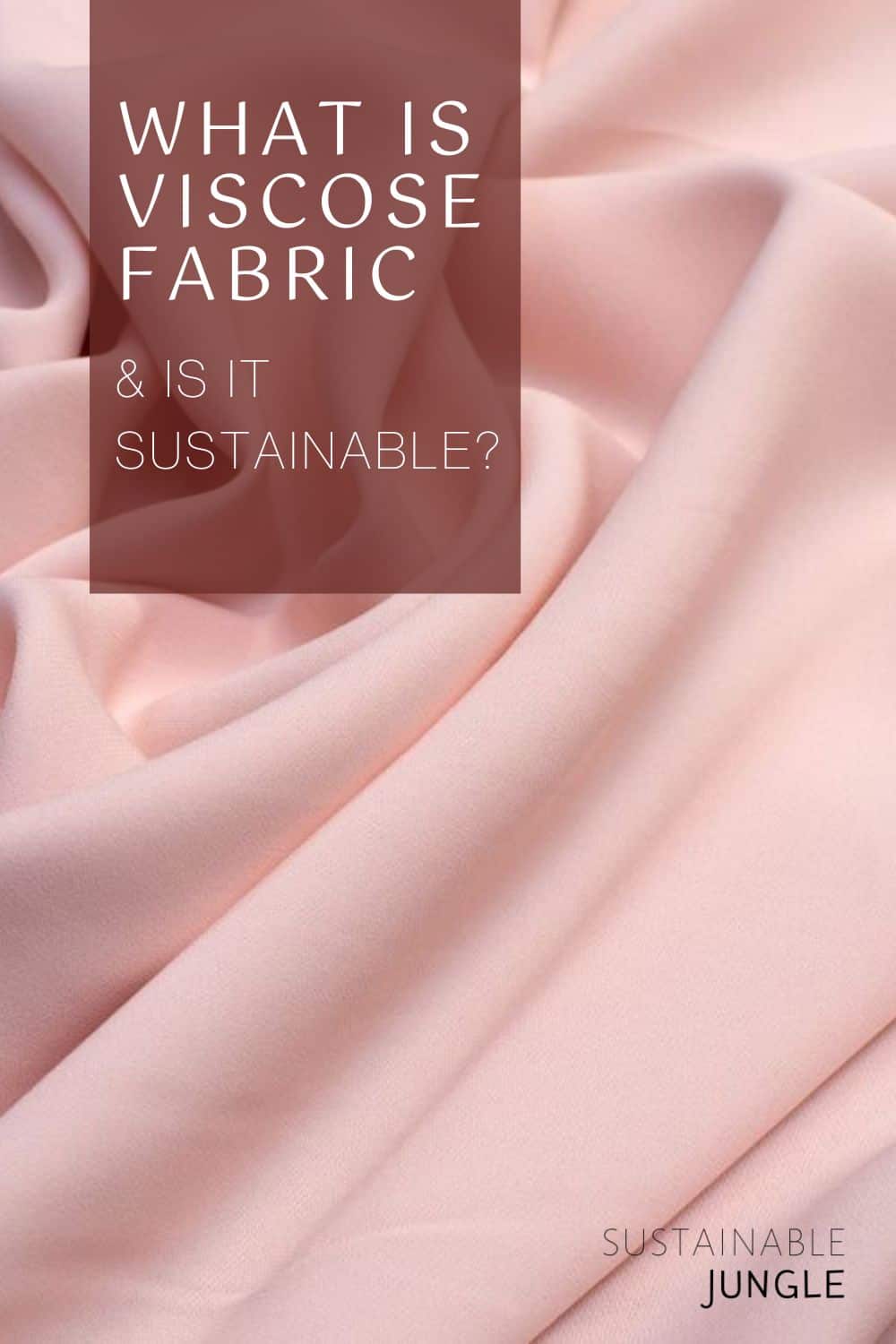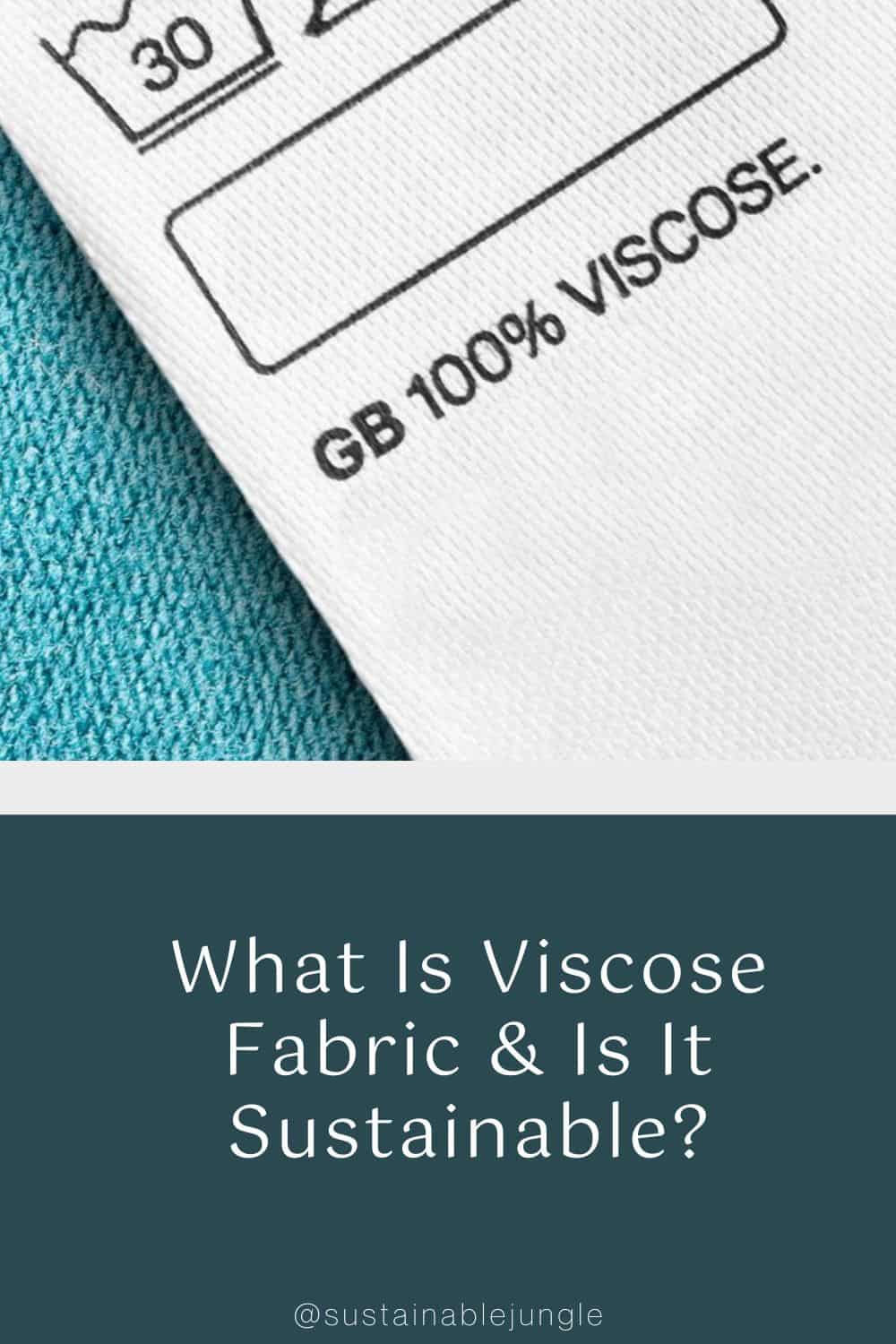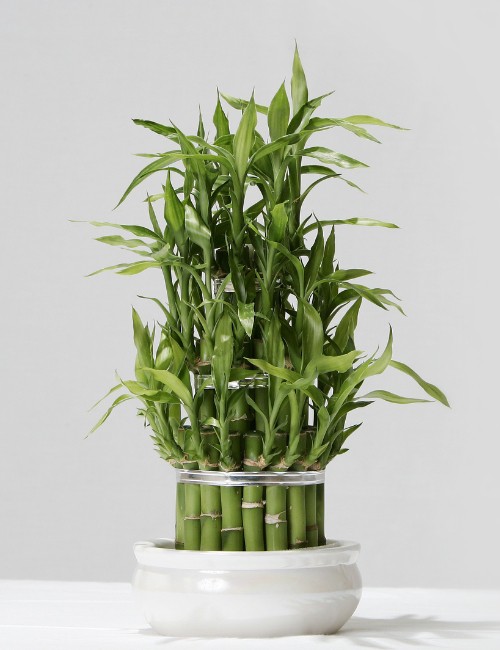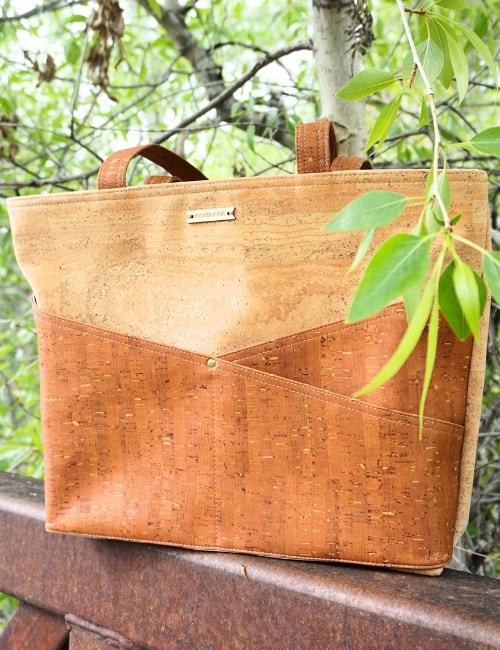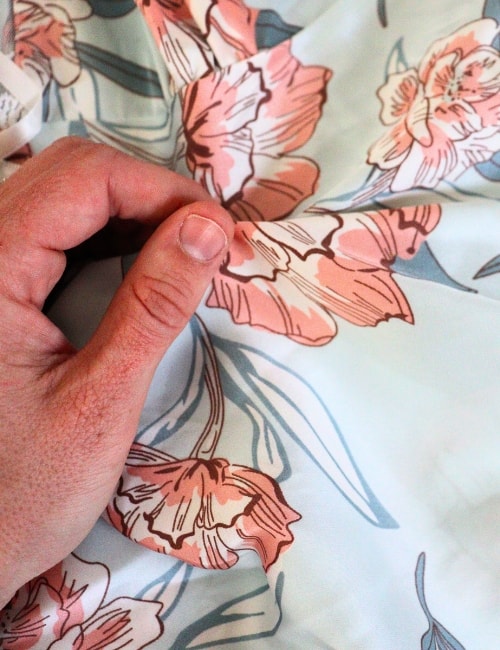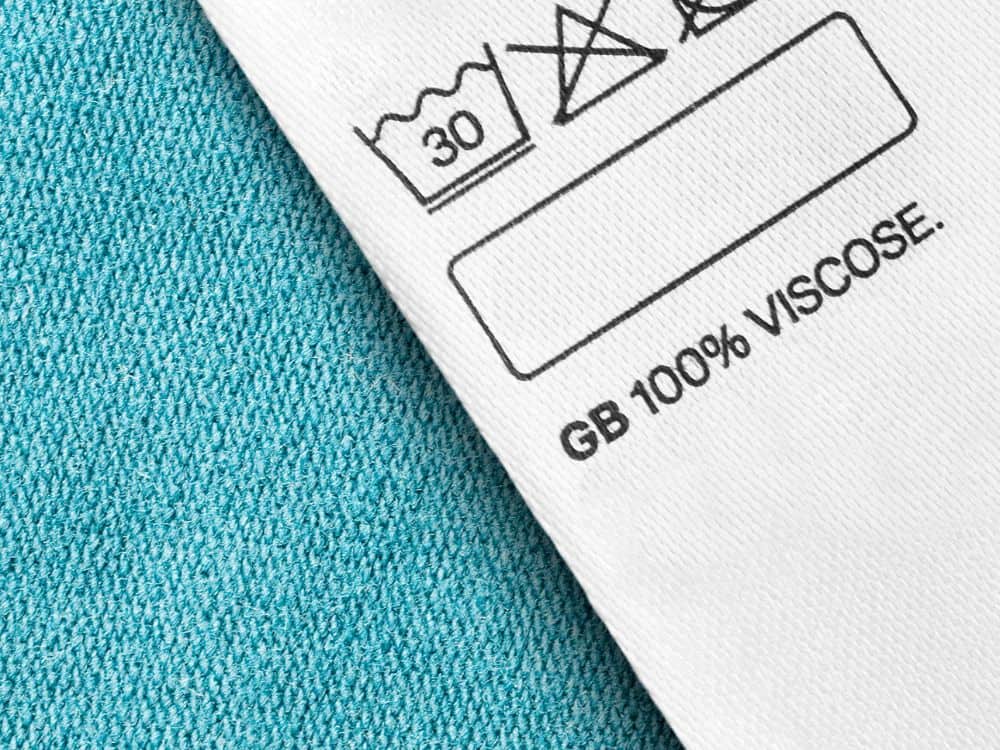
What Is Viscose Fabric & Is It Sustainable?
Viscose: fabric for the future or shady material that belongs in fashion’s dark past?
Originally developed as a cheap alternative to silk, viscose has been mainstay in the fashion industry for decades.
But what is viscose fabric? Does it deserve a place in our sustainable fashion wardrobe?
Viscose borrows its name from the manufacturing process, at one point in which it’s a “viscous”, honey-like liquid before it solidifies.
Unlike honey though, things aren’t so sweet when it comes to sustainability. In fact, conventional viscose is an ecological nightmare.
However, in a similar vein (err…thread) to bamboo fabric, it’s possible to produce viscose in a cleaner, greener way—whether manufacturers choose the greener option is another matter.
Let’s unravel the facts to find out more about viscose/rayon and ultimately decide: is viscose eco friendly?
The Full List Of Viscose Fabric Sustainability Considerations & Properties
- What is viscose fabric?
- What is viscose fabric made of?
- Is viscose sustainable?
- What is sustainable viscose fabric?
- What is viscose used for?
- Viscose fabric pros and cons
- Viscose fabric characteristics
- Viscose vs cotton & viscose vs polyester
1. What Is Viscose Fabric?
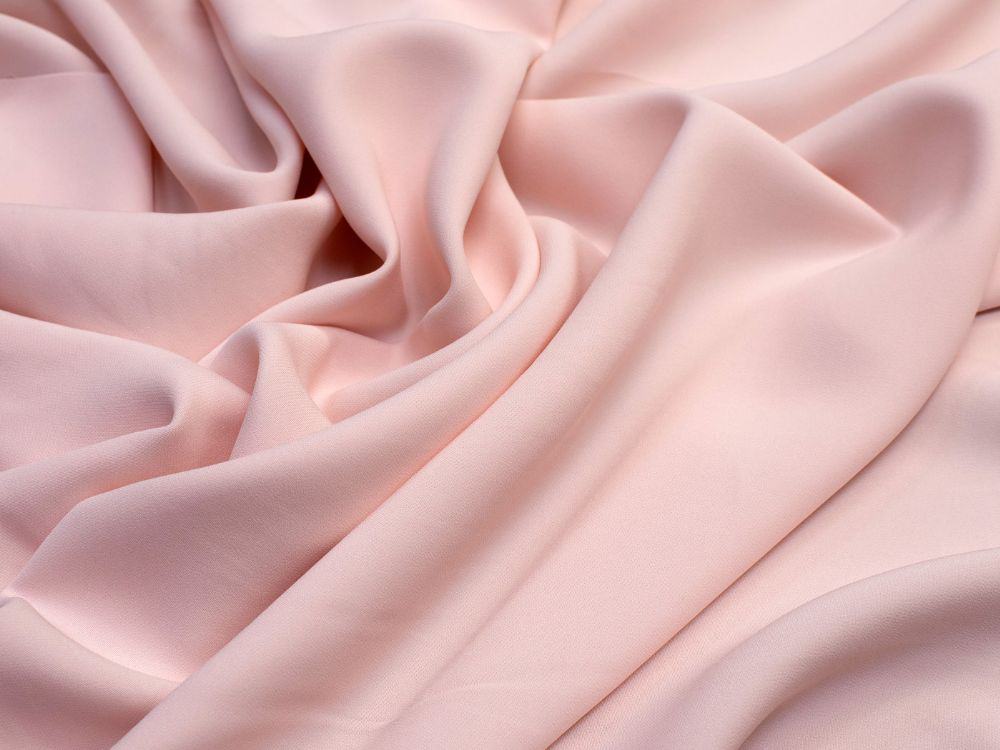
If you’ve found yourself reading clothing labels and wondering, “What is viscose material? Good or bad?”, you’re not alone.
As conscious consumers, we want to know what materials our clothes and home wares are made from, how they’re made, and whether they cut the mustard sustainability-wise.
What material is viscose/ rayon?
To avoid confusion, let’s begin by clarifying that viscose and rayon fabric are one and the same, despite the fact that you’ll see “viscose rayon fabric” on some garment tags.
The terms are used interchangeably, with “rayon” being the most-used term in the US, while “viscose” is the name of choice in Europe.
Viscose/ rayon fabric is the general term for a regenerated manufactured (AKA semi-synthetic) fiber, made from plant-based cellulose using the viscose process.
Other regenerated cellulose fibers include bamboo, cupro fabric, modal, and lyocell fabric, but viscose/ rayon fibers came first.
The grandfather of manufactured fibers, viscose/ rayon was originally developed as an artificial silk alternative.
2. What Is Viscose Fabric Made Of?
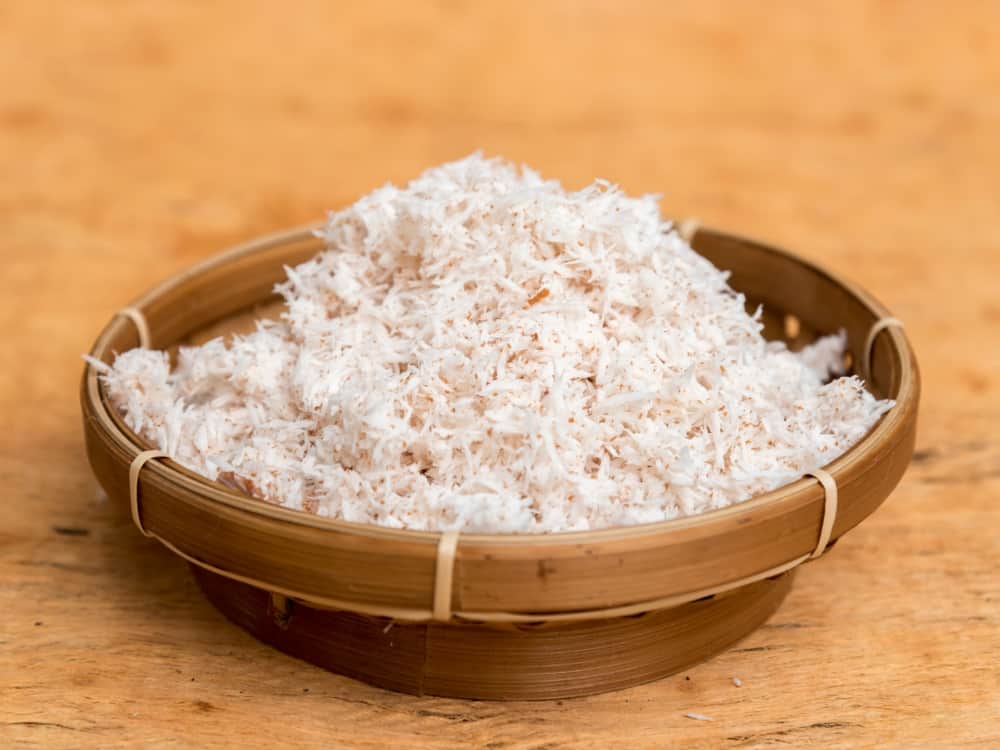
What kind of fabric is viscose?
In other words, is viscose a synthetic or natural fabric?
As with most cellulose fabrics, viscose is made from wood pulp (from trees or woody plants) as the initial raw ingredient.
Don’t confuse this as meaning its the same as natural fibers, though.
The wood pulp used in the production of viscose has to go through a lengthy, chemically-intensive process to turn it into a wearable fabric. This process changes the chemical structure of the cellulose and is far from natural.
Then, is viscose synthetic?
Unlike fully synthetic fabrics such as polyester and nylon which are 100% man-made, viscose is not a completely synthetic fabric either because the raw materials are of natural origin.
Because it falls somewhere in the middle, viscose is a semi-synthetic fabric.
3. Is Viscose Sustainable?
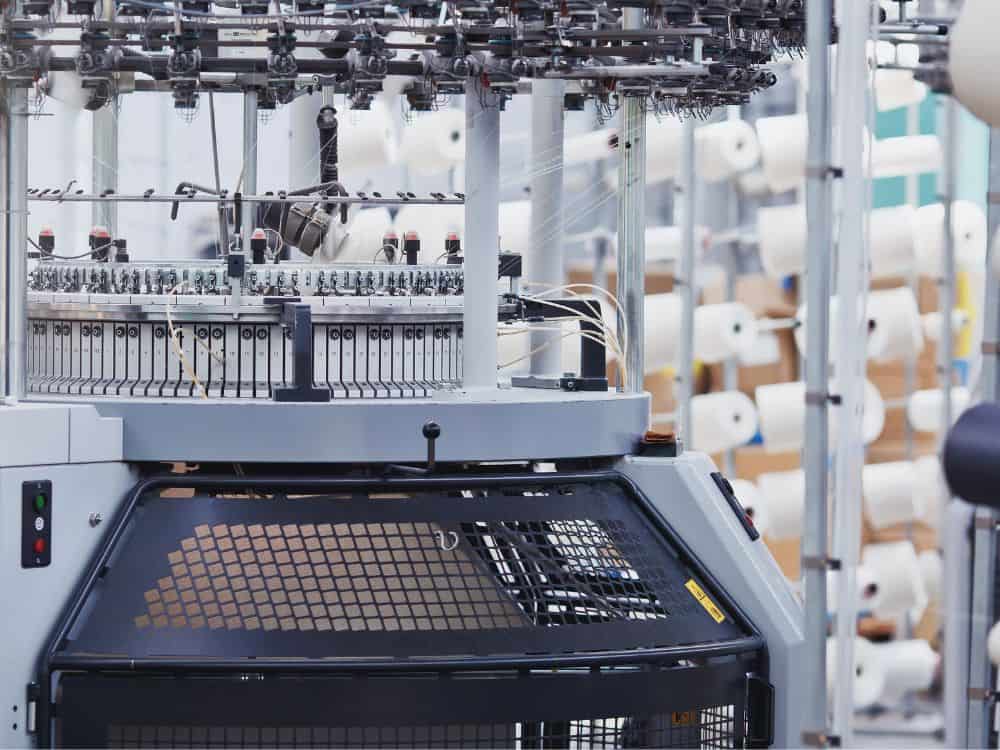
We’ll start by saying with certainty that conventional viscose is bad news for the environment.
There are two main issues to consider when looking at viscose sustainability: where does the wood pulp come from and how is it processed?
While wood pulp is a renewable resource, reports have found that some wood pulp used for making this semi-synthetic is sourced from endangered forests. This raises numerous environmental concerns related to deforestation and biodiversity loss.
Even if the wood is responsibly sourced, there’s still the glaring issue of how it’s processed.
Is the viscose production process environmentally friendly?
Here’s a look at how viscose is made via traditional manufacturing processes:
- Cellulose is extracted from the wood fiber and dissolved in caustic soda (sodium hydroxide, a toxic chemical).
- It’s formed into pressed sheets and processed using carbon disulfide (another toxic chemical).
- It’s then dissolved again before being filtered and extruded through a spinneret to create strands.
- These strands are submerged in a sulfuric acid bath (also toxic) to be softened and able to be spun into yarn.
With all those toxic chemicals named and shamed, it begs the question: is viscose fabric toxic as well as unsustainable?
While not necessarily toxic to those exposed to the final product, its production process poses some pretty serious risks to the environment and workers.
The chemicals (sodium hydroxide, to name just one) used in the production process are hard to dispose of safely, and water contamination near viscose manufacturing sites has been a major concern.
The chemicals also put workers at greater risk. Both caustic soda and sulphuric acid can damage skin and eyes and carbon disulfide harms the eyes, kidneys, blood, heart, liver, nerves, and skin.
Although initially manufactured in the US and Europe, since the 1990s, it has moved overseas to countries like India, Pakistan, Indonesia, and China, where regulations surrounding environmental and worker health are not so stringent or enforced.
Out of sight, out of mind, as it were.
Despite all this, does viscose have any redeeming features?
Is viscose biodegradable? Or is viscose compostable?
Interestingly, viscose IS biodegradable and studies have found it breaks down quicker than cotton.
However, just because something is biodegradable, doesn’t mean that it breaks down cleanly.
Unfortunately, the majority of fabrics have been combined with or treated and dyed with a variety of synthetic substances before ending up in your wardrobe, and viscose is no exception.
Not to mention all those chemicals that go into making the material in the first place.
Case in point: You shouldn’t go chucking your old viscose t-shirt in your indoor compost bin—especially if you’re planning to use the resulting compost to grow veggies in your apartment garden.
So it’s not quite redeemed, but is there such a thing as sustainable viscose fabric?
Maybe…
4. What Is Sustainable Viscose Fabric?
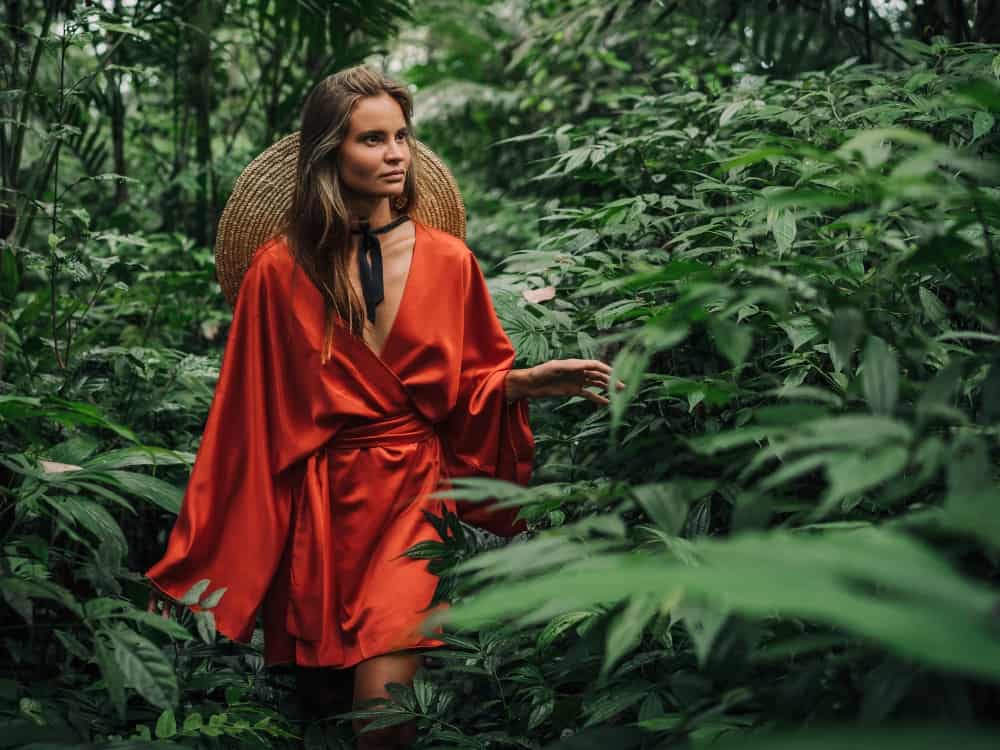
Thankfully, material technologies are advancing all the time, and developments in the viscose manufacturing process mean things are looking up.
Two newer semi-synthetic fibers leading by example are modal and lyocell.
Is modal rayon/viscose eco-friendly?
Sometimes referred to as a “second-generation” cellulosic fiber, modal fabric is a step up from conventional viscose in terms of material performance and sustainability credentials.
Although generic modal rayon production uses the same methods and chemicals (i.e. carbon disulfide) as viscose, the Austrian company Lenzing produces its modal through a closed-loop process.
A zero waste concept, closed-loop manufacturing means that the majority of chemicals and water used in the process are captured and recycled again and again, significantly reducing harmful environmental discharge and toxic waste.
This also offers an 80% reduction in greenhouse emissions compared to the traditional conventional viscose production process.
Despite the improvement, Lenzing Modal is only ranked D in the Made-By Environmental Benchmark for Fibres. This puts it ahead of cotton, wool, conventional viscose, and bamboo viscose, but it’s still only a middle rating, sitting alongside virgin synthetic fibers.
Is lyocell viscose eco-friendly?
Lyocell fabric is the third generation of cellulosic fibers.
TENCEL™ lyocell, again made by Lenzing, is the most sustainable. It’s in class B of the Made-By Environmental Benchmark for Fibres, two classes ahead of modal and three classes ahead of bamboo and generic viscose.
Not only does TENCEL™ use a raw material (eucalyptus) from sustainably managed sources, the production process is a lot more sustainable, too.
It uses a closed-loop process that recycles almost all (upwards of 95%) the water and chemicals. Sodium hydroxide is replaced with an organic solvent.
Things are set to get better still with new, innovative cellulosic fibers being explored.
There’s currently a move away from wood-based pulps towards experiments with everyday items such as milk, orange peels, and even coffee grounds.
They sound good enough to eat, but will they be good enough to wear?
Regardless, these innovations prove that viscose is among a class of fibers that holds a lot of potential for improvement. It’s just a matter of the technology (and demand) catching up.
What about bamboo viscose fabric?
Without wishing to rain on the sustainable material parade, it’s important to mention bamboo.
There’s been some confusion over the sustainability of this relative newcomer to the silk-like material scene.
Bamboo certainly starts out eco-friendly. It’s one of the most sustainable plants in the world because it grows so quickly without needing a lot of water or chemical inputs, while also sequestering more carbon from the atmosphere than most plants.
However, as with conventional viscose, the process of turning the bamboo cellulose into a wearable material is chemically-intensive with toxic chemicals polluting the environment.
The good news for bamboo lovers is that there is bamboo lyocell made using a closed-loop process.
5. What Is Viscose Used For?
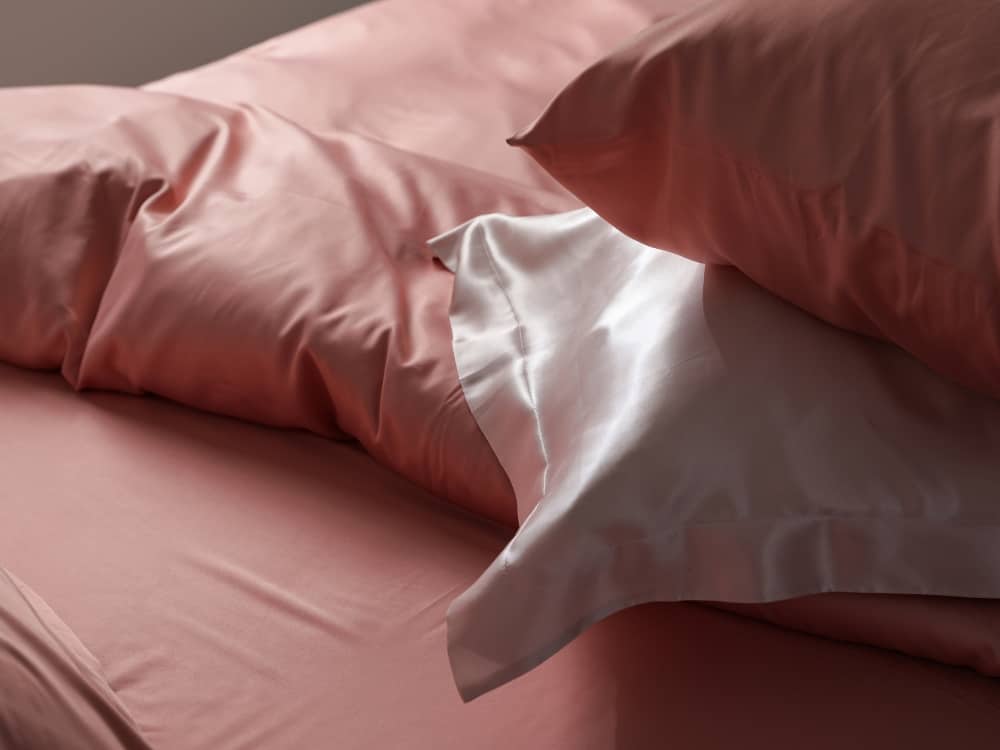
Although it was originally developed as a cheaper artificial silk, consumers soon caught onto the fact that it didn’t measure up that well against natural silk.
Whilst there are manufacturers still making silk-like clothing items from it, it’s now more commonly used as a substitute for cotton.
This makes it ideal for sustainable lingerie, sustainable bedding, and tablecloths—anything you usually find made with cotton but intended to have elegant draping qualities like silk.
Viscose also blends well with other textiles and natural materials.
You can find cotton viscose fabric, linen viscose fabric, and polyester viscose fabric on numerous vintage clothing labels.
6. Viscose Fabric Pros And Cons
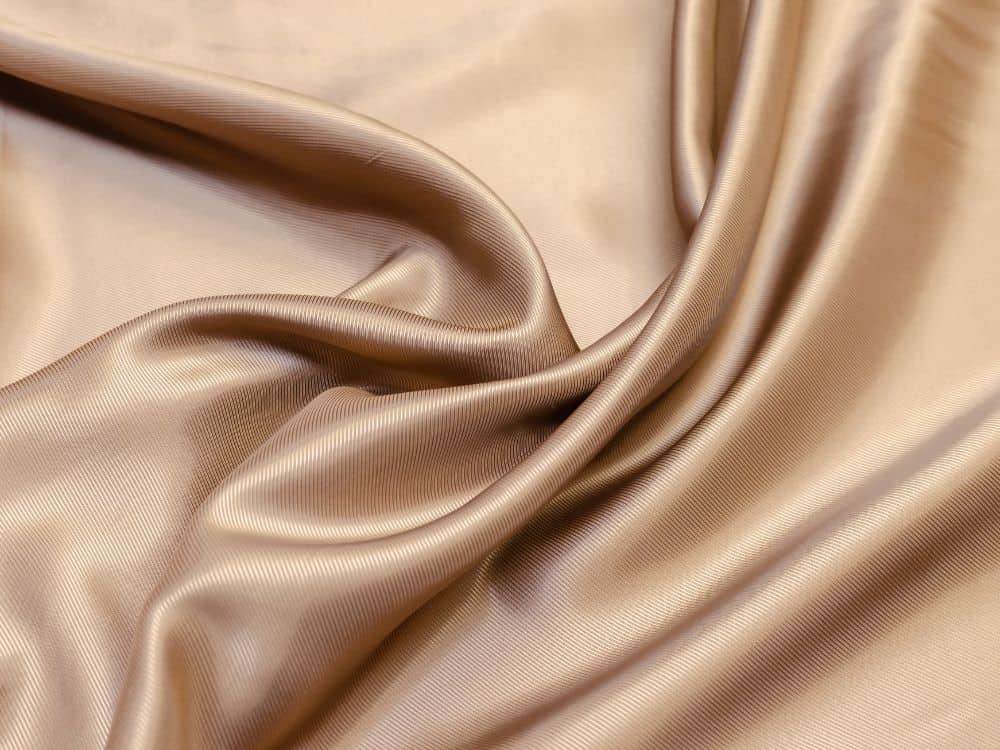
The main viscose fabric benefits are that it is comfortable to wear and drapes similarly to silk—as well as being a cheaper alternative.
It’s also a versatile fabric that’s easy to blend and and will hold dye well.
So what are the disadvantages of viscose?
The cons, in addition to its monumental environmental impact, include its lack of durability (especially when wet) and tendency to fade easily.
7. Viscose Fabric Properties
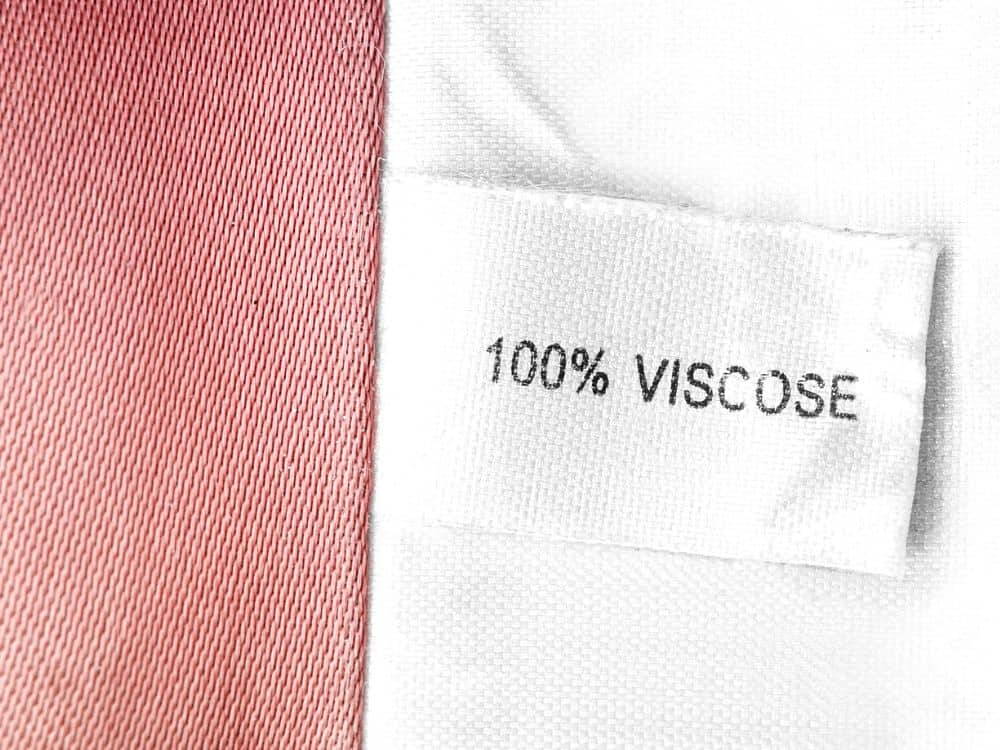
Is viscose a good quality fabric?
That’s debatable, depending on your definition of ‘good’. We’ve already established that it’s a versatile fabric, but let’s check out more viscose material characteristics to understand its appeal.
What does viscose fabric feel like?
Viscose feels very similar to cotton being lightweight and soft against the skin, but it’s less rigid than traditional weight cotton.
In this way, it feels somewhat silky smooth in the way it drapes and is very breathable. So is viscose fabric good for summer?
Yes, very much so, which is why you’ll find in lots of summery wardrobe choices like ethical dresses.
Is viscose fabric stretchy?
On its own it isn’t stretchy, however when blended with other fabrics such as elastane or spandex it does offer some stretch.
Because it has no inherent stretch, one of the disadvantages is that it doesn’t hold its shape very well and can get baggy after wear.
Does viscose fabric wrinkle?
It does wrinkle if not dried and stored properly. See below for tips on ironing.
8. Viscose Vs Cotton & Viscose Vs Polyester
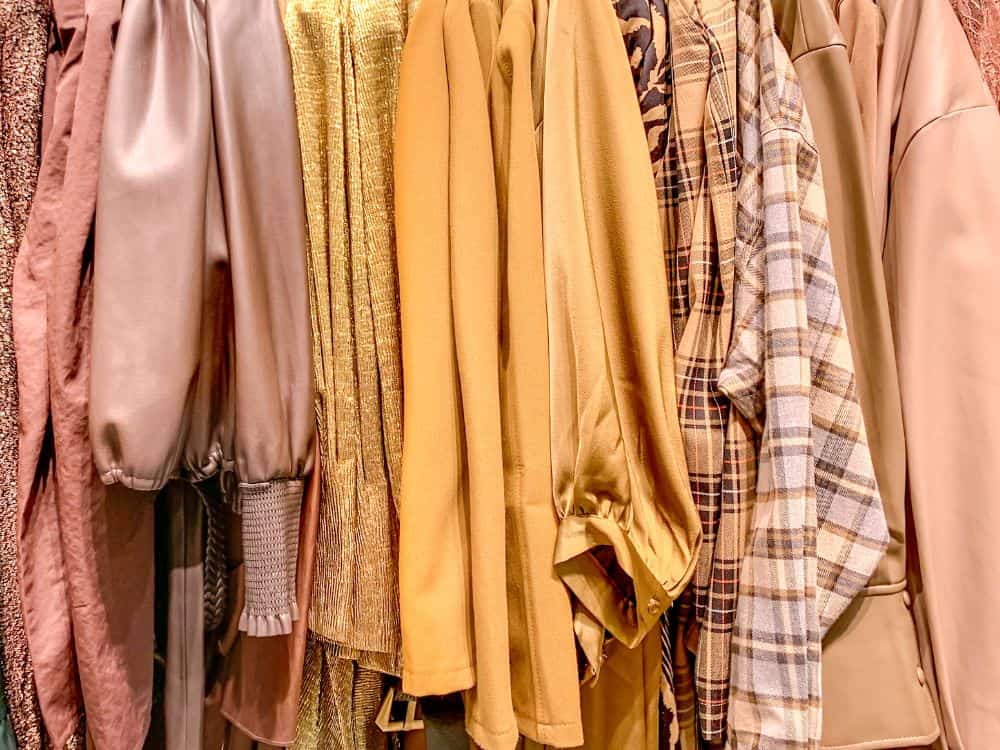
Viscose vs cotton
Although cotton and viscose can be used to make the same things and feel pretty similar, the two fabrics are worlds apart.
But which fabric is better: viscose or cotton?
The most common of natural fibers, cotton has the potential to be very sustainable. Organic cotton is one of the most sustainable fabrics out there (though it’s worth noting traditional cotton is one of the least).
Viscose can either be clean and green or downright dirty.
In terms of properties, cotton is a clear winner in several areas of the viscose/rayon vs cotton debate. It’s much stronger than viscose and gets even stronger when wet.
In contrast, viscose is easily damaged when wet, making it harder to care for.
So, is viscose better than cotton?
There is no definitive answer because it depends entirely on what type of each we’re talking about and how the cotton or viscose is made.
For example, lyocell is certainly better than conventional cotton products, but organic cotton is likely better than any type of viscose material.
Viscose vs polyester
There are a lot of similarities between viscose and polyester. Both fabrics are breathable, moisture-wicking, and non-stretchy.
The biggest difference is that polyester is a 100% synthetic fabric (generally made from fossil fuels) whereas viscose is a semi-synthetic.
Does that means viscose is better than polyester?
Viscose again is the less durable of the two, but it is more breathable so a better choice for hot weather and high output activity, like that of sustainable activewear and sustainable yoga clothes.
Did you know we Have a Newsletter?
We cover the latest in sustainable living, fashion, zero waste, beauty, travel, finance and more…
Final Thoughts On Viscose Sustainability
As with most sustainable and ethical fashion considerations, weighing the viscose’s pros and cons can feel like you’re wading through treacle.
From the raw materials to end-of-life outcomes, it’s a tricky business.
With viscose/rayon fibers especially, it’s all a bit, well…viscous.
Conventionally-made, it’s a sustainable fashion no-go, however with the right processes in place, responsible viscose production is possible.
When buying sustainable viscose, look out for transparent brands that source wood pulp from sustainably-grown forests and produce it in a closed-loop process.
Keep an eye out for new semi-synthetics coming into the market, too (like seaweed fabric).
We’ve seen how vegan leathers are revolutionizing the fashion industry with plant-based wonders like Piñatex (made from pineapple leaves) and cactus leather, and there are some equally interesting cellulosics beginning to bud.
Share this article with your sustainable fashion companions and spread the word about this sticky (or silky) subject.
Pin these:
